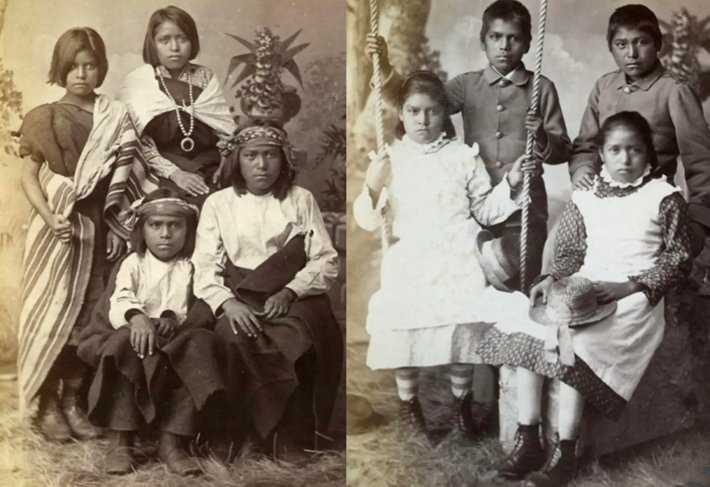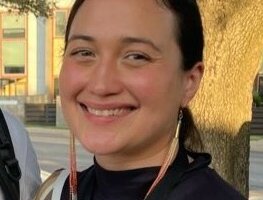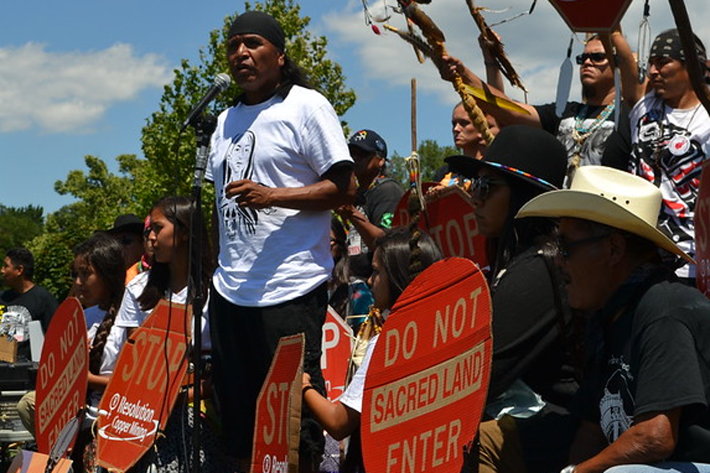U.S. Interior Secretary Deb Haaland has told a Senate committee that the federal government has a responsibility to revitalize education, language and cultural and religious practices among Native American tribes, Alaska Native villages, and Native Hawaiian communities that have suffered from the adverse impact of past policies.

Testifying before a U.S. Senate committee on June 22, Haaland said the forced assimilation of Native Americans in boarding schools over a century and a half was violent and traumatic. Haaland, who hails from Laguna Pueblo, New Mexico, pointed out that she herself is a product of those harrowing practices, as her grandparents were taken away from their families and sent to boarding schools.
The Senate committee is deliberating legislation aimed at creating a national commission on truth and healing to address the multigenerational damage inflicted on Native Americans in boarding schools.
Haaland, the first and only Native American cabinet secretary, fought back tears and her voice cracked with emotion as she addressed the Senate committee. She was backed by tribal leaders and advocates from across the country who expressed their support for a national commission.
“Federal Indian boarding school policy is a part of America’s story that we must tell,” Haaland said. “While we cannot change that history, I believe that our nation will benefit from a full understanding of the truth of what took place and a focus on healing the wounds of the past.”
The forcible removal of Native American children from their families to distant boarding schools, where they were forbidden to speak their languages and frequently abused, is widely considered one of the gravest racial injustices in American history. The issue has figured prominently in the news in recent months as hundreds of unmarked graves have been found at the premises of what used to be residential schools for indigenous children in Canada.
Religious authorities at the Canadian sites followed in the footsteps of their American counterparts, who used a raft of laws, beginning with the 1819 Indian Civilization Act, to run the boarding schools.
The institutions were designed to instill in the children a profound distaste for their ancestral way of life by systematically degrading and forbidding “their Native practices and languages,” according to a 2009 Senate resolution jointly sponsored by former U.S. Ambassador-at-Large for International Religious Freedom Sam Brownback. Children’s remains were also identified at the Carlisle Indian Industrial School in Pennsylvania.
In June 2021, Haaland announced a Federal Indian Boarding Schools Initiative to inquire into the treatment of Native American children. Led by Assistant Secretary for Indian Affairs Bryan Newland, the Department of the Interior began preparing a report describing available historical records about the boarding schools and their specific locations.
On May 11, Haaland and Newland released the first volume of the investigative report. It found that over a 150-year period from 1819 to 1969, the Indian boarding school system was comprised of 408 schools in 37 states or territories, including Alaska and Hawaii.
The investigation has so far pinpointed marked or unmarked burial sites at 53 schools across the network, whose numbers are expected to increase as the probe continues. More than 500 American Indian, Alaska Native, and Native Hawaiian children died at 19 boarding schools, the investigation further found.
As part of the department’s initiative as well as in response to the report’s recommendations, Haaland has launched a “Road to Healing”—a yearlong commitment to travel nationwide and offer American Indian, Alaska Native and Native Hawaiian boarding school survivors an opportunity to share their experiences. The project will also help communities connect with each other, while providing them trauma support and facilitating the documentation of a permanent oral history of their travails.
Norma Ryūkō Kawelokū Wong Roshi, a policy official for former Hawaii Governor John Waiheʻe, said the Interior Department’s work as well any other commissions in the future should be viewed as vital steps in a process spanning generations.
“This is not one and done,” Wong was quoted by Associated Press as saying. “What took hundreds of years to tear to the point of breaking cannot be repaired, let alone propel us toward a more thriving future over the course of a few studies, reports and hearings.”
_______________
From its beginnings, the Church of Scientology has recognized that freedom of religion is a fundamental human right. In a world where conflicts are often traceable to intolerance of others’ religious beliefs and practices, the Church has, for more than 50 years, made the preservation of religious liberty an overriding concern.
The Church publishes this blog to help create a better understanding of the freedom of religion and belief and provide news on religious freedom and issues affecting this freedom around the world.
The Founder of the Scientology religion is L. Ron Hubbard and Mr. David Miscavige is the religion’s ecclesiastical leader.
For more information visit the Scientology website or Scientology Network.


